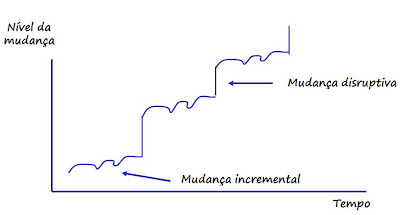No artigo "
Unbundling the corporation" de John Hagel III e Marc Singer, publicado no número 3 do The McKinsey Quarterly no ano 2000, encontramos mais um racional que explica o perigo de uma organização não identificar os seus clientes-alvo e oferecer-lhes uma proposta de valor, para tentar ser tudo para todos.
.
"Activities that companies have always believed to be central to their business will suddenly be offered by new, specialized competitors that can undertake those activities better, faster, and more efficiently. Executives will be forced to ask the most basic and discomforting question about their companies: what business are we really in? The answer will decide their fate in an increasingly frictionless economy."
...
"Look beneath the surface of most companies and you will find three kinds of businesses: a customer relationship business, a product innovation business, and an infrastructure business. Although organizationally intertwined, these businesses vary a great deal. Each plays a unique role, employs different kinds of people, and has different economic, competitive, and even cultural imperatives."
...
"Sooner or later, companies come up against a cold fact: the economics governing the three core processes conflict. Bundling them into a single corporation inevitably forces management to compromise the performance of each process in ways that no amount of reengineering can overcome."
...
"When the three businesses are bundled into a single corporation, their divergent economic and cultural imperatives inevitably conflict. Scope, speed, and scale can’t be optimized simultaneously; trade-offs must be made. To protect manufacturing scale, for example, a company might prohibit its salespeople from selling another company’s products, limiting their ability to achieve economies of scope. It might institute standardized pay scales that, while rational for the vast majority of its people, actually alienate its most talented product designers. To protect customer relationships, it might require a degree of customization that slows product introductions and creates inefficiencies in the production infrastructure."
...
"Most senior managers make such compromises because they believe, or assume, that they have no option. How, after all, can a core process be removed from a company without somehow undermining its identity or destroying its essence?
Such a mind-set, though historically justified, is becoming increasingly dangerous. While traditional companies strive to keep their core processes bundled together, highly specialized competitors that can optimize the particular activities they perform are emerging. Because they don’t have to make compromises, these specialists have enormous advantages over integrated companies.
.
Under the pressures of deregulation, global competition, and advancing technology, a number of industries are already fracturing along the fault lines of customer relationship management, product innovation, and infrastructure management."
.
E que tal começar a discussão com a apresentação de um gráfico em que em ordenadas temos € facturados por horas trabalhadas e em abcissas temos os dias do mês. A grande variabilidade desta variável, apesar da relativa constância do número de unidades produzidas, talvez desperte a curiosidade para a mudança, para a sintonia do "canal" criação de valor.















